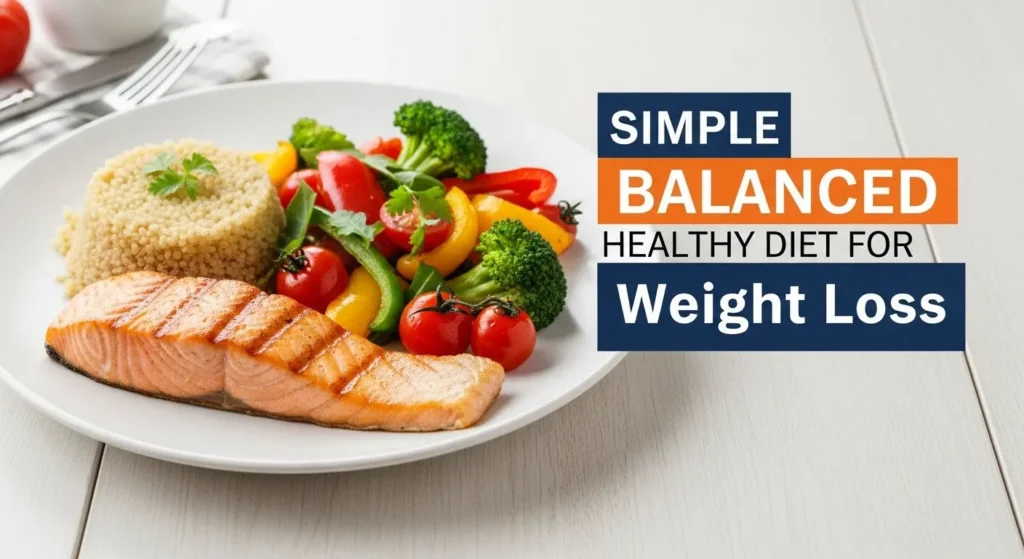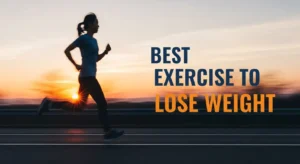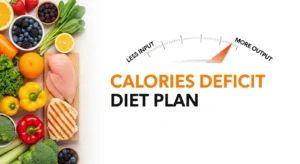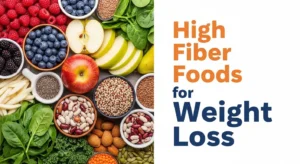Are you looking to shed some extra pounds but feel lost in a sea of confusing diet advice? You're not alone! Many people think losing weight means eating boring food or starving themselves. But what if we told you it could be much simpler and more enjoyable? This article is your friendly guide to understanding a balanced healthy diet for weight loss. We'll show you how to eat well, feel great, and reach your weight goals without extreme measures. Get ready to discover how simple changes can make a big difference!
Build Your Balanced Plate!
Want to try building your own balanced meal? Use our interactive tool below! Select one item from each category to create a delicious and healthy meal idea.
Build Your Balanced Plate! 🥗
Select one item from each category to create a delicious and balanced meal idea.
Your balanced meal idea will appear here!
Key Takeaways
- Calorie Balance is Key: Losing weight comes down to eating fewer calories than your body uses, but what you eat is just as important for your health and feeling full.
- Eat Your Macronutrients: A truly balanced diet includes the right mix of lean proteins, complex carbohydrates, and healthy fats to fuel your body and keep you satisfied.
- Portion Control & Hydration are Simple Tools: Learning to manage how much you eat and drinking enough water are easy, powerful steps toward a balanced healthy diet for weight loss.
- Plan for Success: Meal planning and preparing your food ahead of time can make healthy eating much easier and help you stick to your diet consistently.
- Focus on Sustainable Habits: Forget crash diets! For lasting weight loss and better health, focus on building small, healthy habits you can keep up with long-term.
Understanding the Basics of balanced healthy diet for weight loss
Before we dive into specific foods, let's get clear on how weight loss actually works. It's not magic, but science!
The Calorie Equation: In vs. Out
The most fundamental rule of weight loss is creating a calorie deficit. Following a balanced healthy diet for weight loss helps you eat fewer calories than your body uses in a day. Think of your body like a car: food is the fuel. If you put in less fuel than you use to drive around, the car starts using its stored fuel (body fat) to keep going.
- Calories In: The energy you get from the food and drinks you consume.
- Calories Out: The energy your body uses for everything: breathing, thinking, moving, digesting food, and exercising.
To lose weight, your “Calories Out” needs to be more than your “Calories In.” But don't worry, you don't need to count every single calorie forever. Understanding this basic idea helps you make smarter food choices.
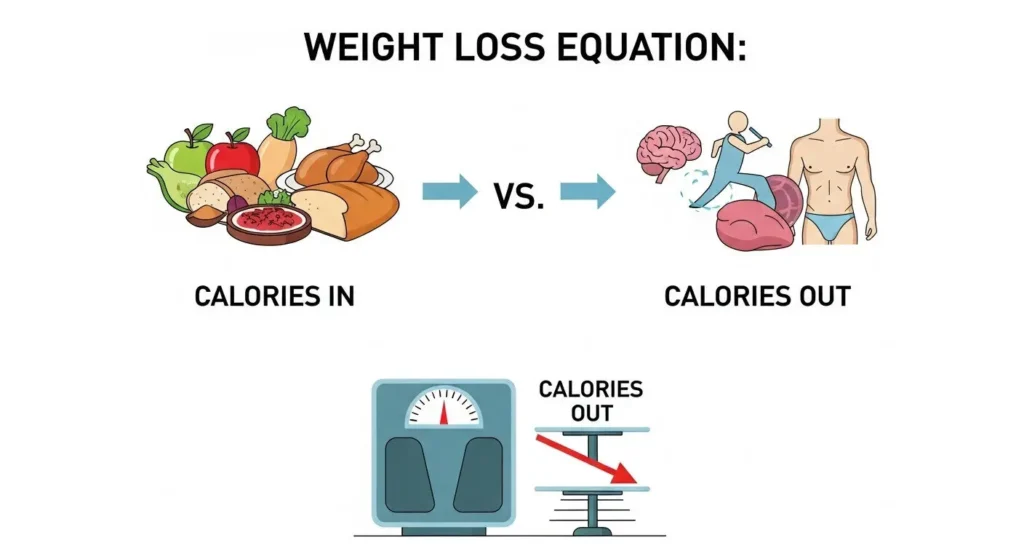
The Power of Macronutrients
Not all calories are created equal! The types of food you eat matter a lot for your health, energy levels, and how full you feel. We get calories from three main “macronutrients”:
- Proteins: These are the building blocks for your muscles, skin, and hormones. Eating enough protein helps you feel full longer, which can stop you from snacking on unhealthy foods. It also helps protect your muscles when you're losing weight.
- Examples: Chicken, fish, eggs, beans, lentils, tofu, Greek yogurt.
- Carbohydrates: Your body's main source of energy. It's important to choose “complex” carbohydrates over “simple” ones. Complex carbs give you steady energy and contain fiber, while simple carbs (like sugary drinks or white bread) cause quick energy spikes and crashes.
- Examples of Complex Carbs: Whole grains (oats, brown rice, quinoa), sweet potatoes, vegetables, fruits.
- Fats: Yes, fats are important! Healthy fats are needed for absorbing vitamins, hormone production, and keeping your brain healthy. They also help you feel satisfied after meals. Just like carbs, there are good fats and bad fats.
- Examples of Healthy Fats: Avocados, nuts, seeds, olive oil, fatty fish (like salmon).
Don't Forget Micronutrients and Fiber!
Besides the big three (macros), your body also needs micronutrients (vitamins and minerals) and fiber.
- Vitamins & Minerals: These are like the tiny workers that help your body do everything, from boosting your immune system to making energy. You get them from a wide variety of fruits, vegetables, and whole foods.
- Fiber: Found in plant foods, fiber helps with digestion, keeps you feeling full, and can even help control blood sugar levels. It's super important for a healthy gut!
The “Balanced” Part: What Does It Mean?
So, you know about calories and macronutrients. But how do you put it all together to create a balanced diet? It's simpler than you think!
Variety is Your Best Friend
Eating a balanced diet means not just focusing on one type of food. It's about getting a mix of all the good stuff your body needs. Think of it like a rainbow on your plate! Different colors in fruits and vegetables often mean different vitamins and minerals. Eating a wide variety of foods helps you get all the nutrients without needing to take a million supplements.
Portion Control Made Easy
You can eat the healthiest foods in the world, but if you eat too much, you won't lose weight. Portion control isn't about tiny, unsatisfying meals. It's about eating the right amount for your body. Here are some simple tricks:
- Use Smaller Plates: A smaller plate makes a normal portion look bigger, tricking your brain into feeling more satisfied.
- Your Hand as a Guide: This is a super easy way to estimate portions without measuring:
- Protein: A portion about the size of your palm.
- Carbohydrates: A cupped hand for grains or starchy veggies.
- Fats: About the size of your thumb.
- Vegetables: As much as two cupped hands can hold – load up on these!
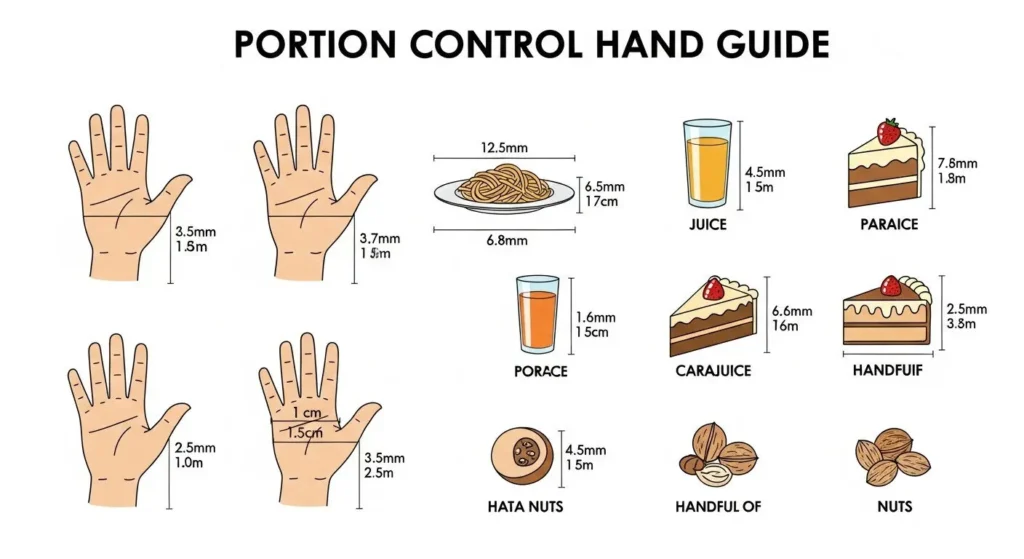
- An open palm next to a piece of chicken or fish, labeled “Protein (1 serving).”
- A cupped hand next to a pile of rice or oats, labeled “Carbohydrates (1 serving).”
- A thumb next to a few nuts or a drizzle of oil, labeled “Fats (1 serving).”
- Two cupped hands together next to a large pile of mixed vegetables, labeled “Vegetables (unlimited, but aim for 2+ servings).” The design is clean, uses simple colors, and has legible text.
Hydration: Your Secret Weight Loss Weapon
Water is often overlooked, but it's crucial for weight loss and overall health.
- Fills You Up: Drinking a glass of water before meals can help you feel fuller, so you eat less.
- Boosts Metabolism: Water helps your body burn calories more efficiently.
- Reduces Cravings: Sometimes, your body thinks it's hungry when it's just thirsty! Staying hydrated can help reduce unnecessary snacking.
- Aids Digestion: Water helps your digestive system work smoothly.
Aim for at least 8 glasses (about 2 liters) of water a day. Keep a water bottle handy to remind yourself to sip throughout the day!
Building Your Healthy Plate
Now, let's put it all together and talk about what your meals should look like for a balanced healthy diet for weight loss.
Lean Proteins: Your Satiety Stars
Protein is essential because it helps you feel full and satisfied, making it easier to stick to your calorie goals.
- Chicken Breast/Turkey: Lean and versatile.
- Fish: Salmon, tuna, cod, and tilapia are great choices. Salmon also provides healthy omega-3 fats.
- Eggs: A complete protein, great for any meal.
- Legumes: Beans, lentils, and chickpeas are excellent plant-based protein sources, also high in fiber.
- Tofu/Tempeh: More plant-based options, perfect for stir-fries or grilling.
- Greek Yogurt: High in protein, great for snacks or breakfast.
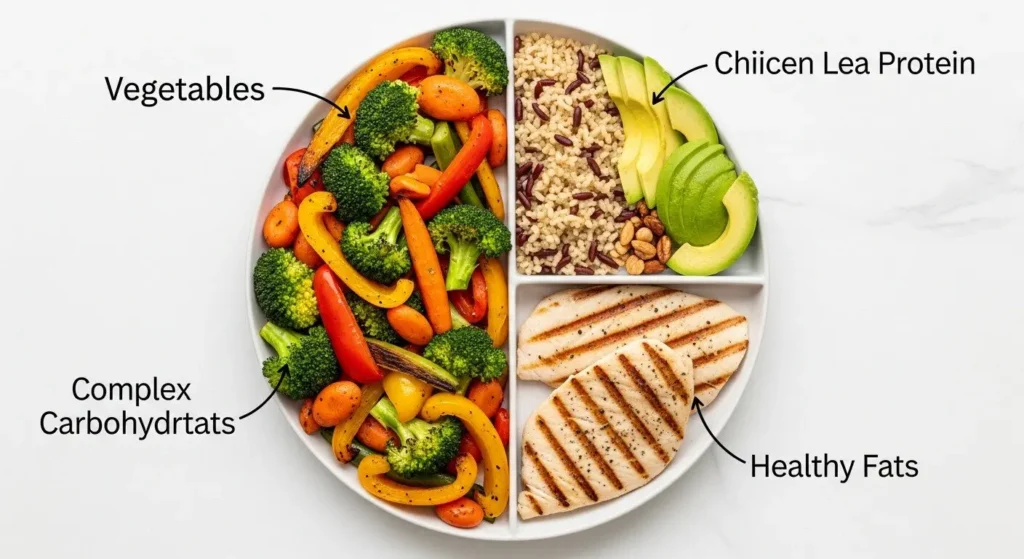
Complex Carbohydrates: Steady Energy
These carbs provide lasting energy without the sugar crash.
- Whole Grains: Brown rice, quinoa, oats, whole-wheat bread, whole-wheat pasta.
- Sweet Potatoes: A nutritious and delicious root vegetable.
- Other Starchy Vegetables: Corn, peas (in moderation).
Healthy Fats: Essential for Health
Don't be afraid of fats! Just choose the right ones.
- Avocado: Creamy, delicious, and full of healthy monounsaturated fats.
- Nuts & Seeds: Almonds, walnuts, chia seeds, flax seeds. Great for snacks or adding to meals.
- Olive Oil: Use for cooking or in salad dressings.
- Fatty Fish: Salmon, mackerel, sardines (also great protein sources!).
Fruits & Vegetables: The Powerhouses
These should make up a large part of your diet. They are low in calories, high in fiber, and packed with vitamins and minerals.
- Leafy Greens: Spinach, kale, romaine lettuce.
- Cruciferous Veggies: Broccoli, cauliflower, Brussels sprouts.
- Colorful Veggies: Bell peppers, carrots, tomatoes, cucumbers.
- Berries: Strawberries, blueberries, raspberries (lower in sugar than some other fruits, high in antioxidants).
- Apples, Oranges, Bananas: Great for snacks, but watch portions due to natural sugars.
A Simple Plate Example: Imagine your plate: Half of it filled with steamed broccoli and bell peppers. A quarter with grilled chicken breast. Another quarter with a small serving of brown rice, topped with a few slices of avocado. That's a perfectly balanced healthy diet for weight loss meal!
Simple Strategies for Success
Knowing what to eat is one thing, but actually doing it consistently is another! Here are some simple strategies to stick to a balanced healthy diet for weight loss and make your journey easier and more successful.
Meal Planning & Prep
This is a game-changer! When you plan your meals, you're less likely to grab unhealthy options when hunger strikes.
- Plan Your Week: On a Sunday, decide what you'll eat for breakfast, lunch, and dinner for the next 3-5 days.
- Grocery List: Make a list based on your plan and stick to it at the store.
- Batch Cook: Cook larger portions of protein (like chicken or quinoa) or chop veggies ahead of time so they're ready to go.
- Pack Lunches: Bringing your own lunch to work or school saves money and ensures you eat healthy.
Mindful Eating
Slow down and pay attention to your food. This helps you recognize when you're truly full.
- Eat Slowly: Put your fork down between bites.
- No Distractions: Avoid eating in front of the TV or computer. Focus on your food.
- Listen to Your Body: Are you truly hungry, or just bored? Stop when you feel comfortably full, not stuffed.
- Savor Each Bite: Notice the flavors, textures, and smells.
Dealing with Cravings
Cravings happen! It's okay. Don't ban foods entirely, as this can lead to feeling deprived and then overeating later.
- Small Treats: Allow yourself a small portion of a favorite treat sometimes. Moderation is key.
- Healthy Swaps: Craving something sweet? Try a piece of fruit or Greek yogurt. Salty? A handful of nuts instead of chips.
- Hydrate First: Drink water; sometimes cravings are just thirst signals.
Importance of Sleep & Stress Management
These might not seem directly related to diet, but they play a huge role in weight loss.
- Sleep: Lack of sleep messes with your hunger hormones, making you feel hungrier and crave unhealthy foods. Aim for 7-9 hours of quality sleep.
- Stress: Chronic stress can lead to emotional eating and makes it harder for your body to lose weight. Find healthy ways to manage stress, like meditation, walking, or hobbies.
Exercise as a Partner
While diet is 80% of weight loss, exercise is your best partner. It burns calories, builds muscle (which boosts your metabolism), improves your mood, and has countless other health benefits.
- Find What You Enjoy: Walking, dancing, cycling, swimming, lifting weights.
- Start Small: Even 20-30 minutes of brisk walking a few times a week makes a difference.
- Consistency: The key is to make it a regular part of your routine.
Common Mistakes to Avoid
When aiming for a balanced healthy diet for weight loss, it's easy to fall into common traps. Here’s what to steer clear of:
- Crash Diets & Extreme Restrictions: These promise quick fixes but are unsustainable. They often lead to nutrient deficiencies, muscle loss, and eventually, rebound weight gain. Your goal is a lifestyle change, not a temporary diet.
- Skipping Meals: Thinking you'll save calories by skipping breakfast or lunch can backfire. You'll likely be starving later and overeat, making unhealthy choices. Regular meals keep your metabolism steady and hunger under control.
- Ignoring Hydration: As mentioned, water is vital. Not drinking enough can make you feel hungry when you're just thirsty, leading to unnecessary snacking.
- Over-restricting Food Groups: Unless you have an allergy or intolerance, don't completely cut out entire food groups (like all carbs or all fats). A truly balanced diet includes all macronutrients in healthy forms and appropriate portions. This prevents deficiencies and makes the diet more enjoyable and sustainable.
- Expecting Instant Results: Weight loss is a journey, not a race. Celebrate small victories and understand that progress might be slow but steady. Focus on building healthy habits, and the results will follow.
Conclusion
Embarking on a balanced healthy diet for weight loss doesn't have to be a struggle. By focusing on whole foods, understanding portions, and adopting simple habits, you can achieve your weight loss goals and enjoy better health. Remember, consistency is key, and every small step forward is a victory. You've got this!

